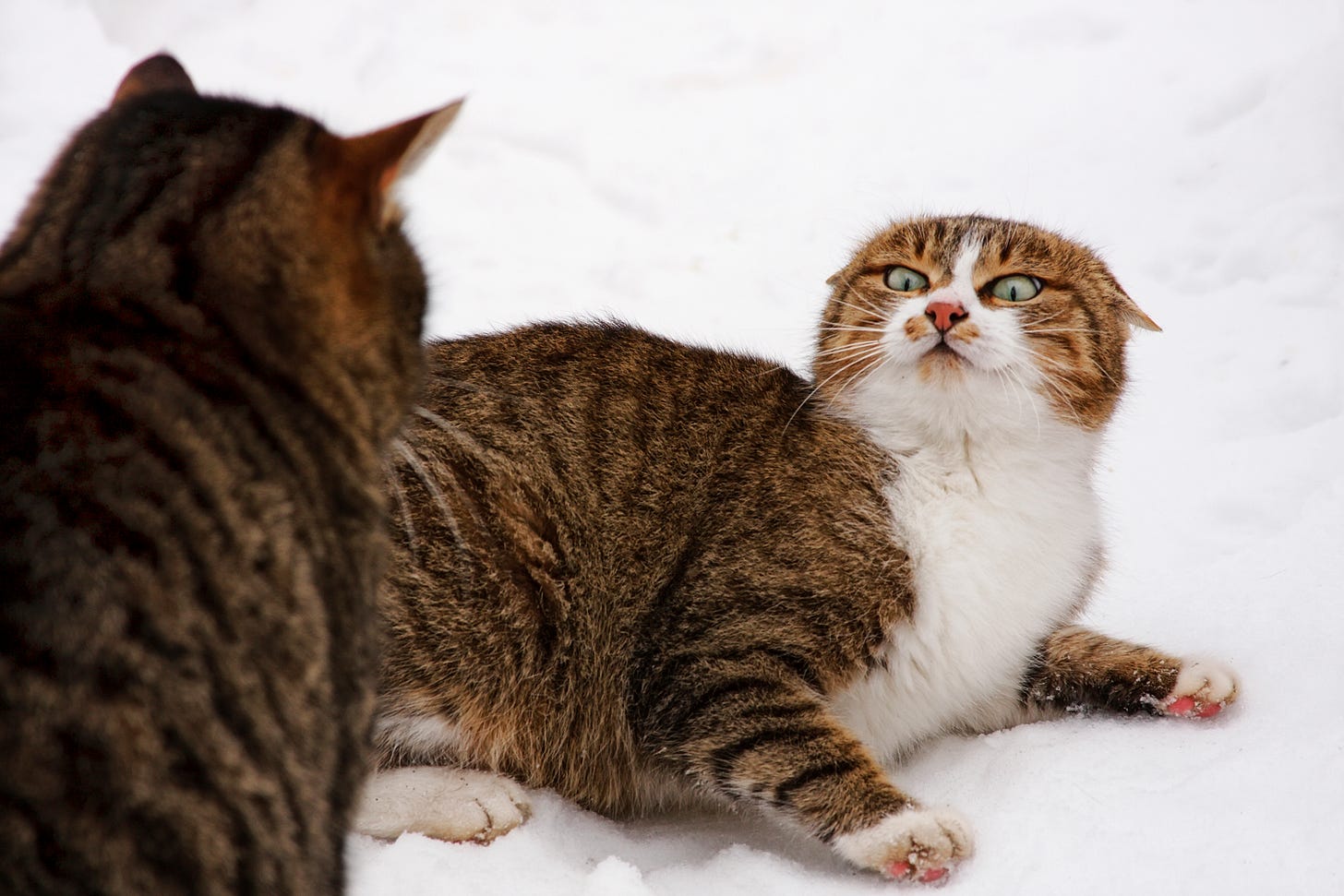If you own more than one cat, then this post is for YOU. Although your kitties might be chummy-wummy with each other, there is a danger lurking that could change your house from a peaceful abode to a WAR ZONE if you’re not aware of a specific behavior called “non-recognition aggression.” This behavior is described as, “when one cat is uncharacteristically aggressive toward a companion cat after a period of separation.”
Non-recognition aggression in cats can occur in circumstances like your indoor-only cat escapes outside, your cat is taken to the veterinarian, your cat ends up in an animal shelter, you board your cat at a cat hotel, you board your cat at a pet sitter’s home, or you take your cat to a cat show.
I’ve been involved in lost cat (and dog) recovery work since 1996 and I have seen this behavior many, many times. I just never knew that it had a name, that there is a specific reason that it happens, and that there IS a solution! The times I’ve seem this behavior is when someone’s indoor-only cat escapes outside for several days, is recovered, and is brought back into the home. What often happens is that the secondary in the cat rejects the escape artist by hissing, spitting, and acting like it wants nothing to do with the recovered kitty.
The reason for this behavior, as it turns out, is of all things, SCENT!
As it turns out, cats have very powerful olfactory systems and they will pick up on the strange scents that the escaped-kitty picked up on his fur while he was galivanting around outside. Airborne scent particles (odor) of environmental scents that include being near other cats, dogs, or any scent that the secondary cat does not recognize and does not like. Thus, cats who are taken to a veterinary clinic, taken to an animal shelter, or escape outside into an area where there is other cat scent are at risk of being rejected by their housemate cats.
I recently learned about this behavior from an amazing cat behaviorist Molly DeVoss from Cat Behavior Solutions. Molly has an amazing solution that she outlines her website. It involves separating the smelly cat

from the other housecat when the smelly cat first comes home. Molly suggests sprinkling brewer’s yeast on both cats. It is harmless, is actually good for a cat’s digestive system if they lick it off, and it will cause both cats to smell alike and will mask any unfamiliar cat scents that would be clinging to the smelly cat’s fur.
You can read step-by-step instructions on how to conduct this smelly cat to secondary cat introduction on Molly’s website here. Anyone whose cat is exposed to the scent of other cats should be prepared to follow these instructions. Otherwise, the hissing, spitting, swatting, yowling and cat fights in your home can actually be a PERMANENT problem. If you don’t address it (a slow reintroduction and masking the scent) you might end up with endless cat fights inside of your formerly peaceful home. Now, won’t THAT be fun?





Interesting. One time when one of my two dogs went and stayed at the vet for a long time (about two weeks or more - this was back in the 70's) the stay home dog wanted to attack the one that had been away. I thought the stay home dog was jealous and had been happy to have Mom all to himself. He was the "second" child so had never had me all to himself before. Perhaps some of his displeasure was due to scents!
I learned something new from you today! 🙏